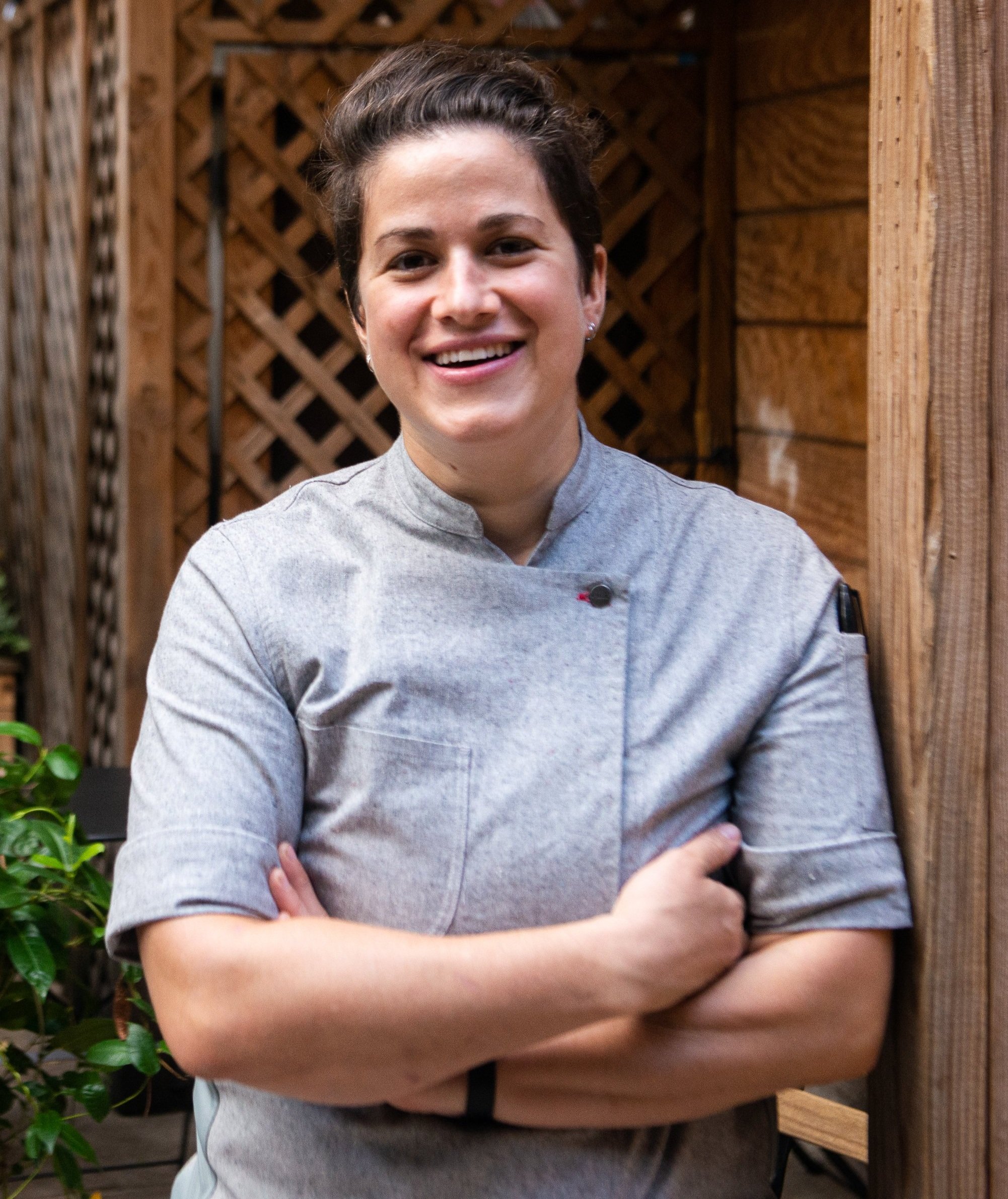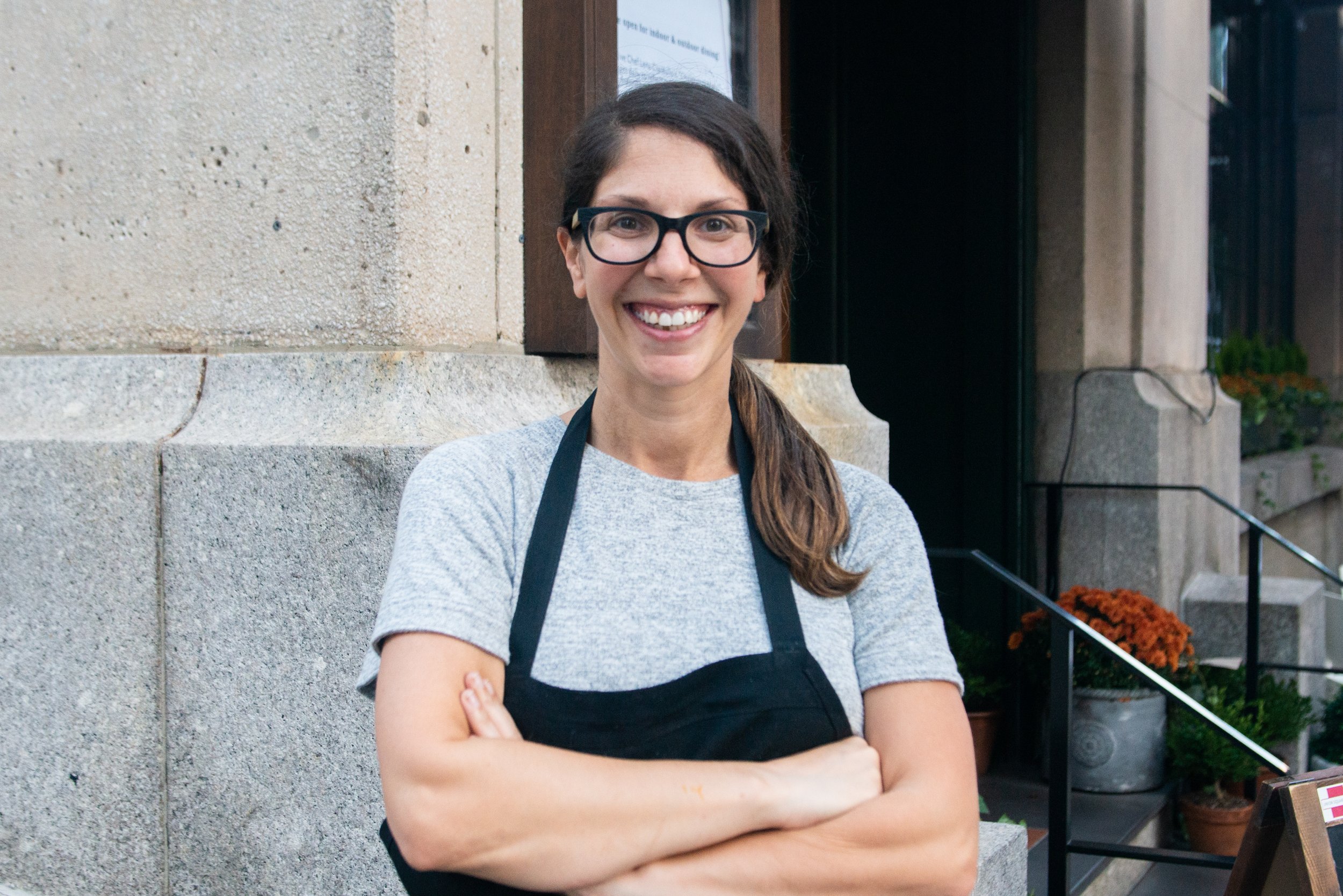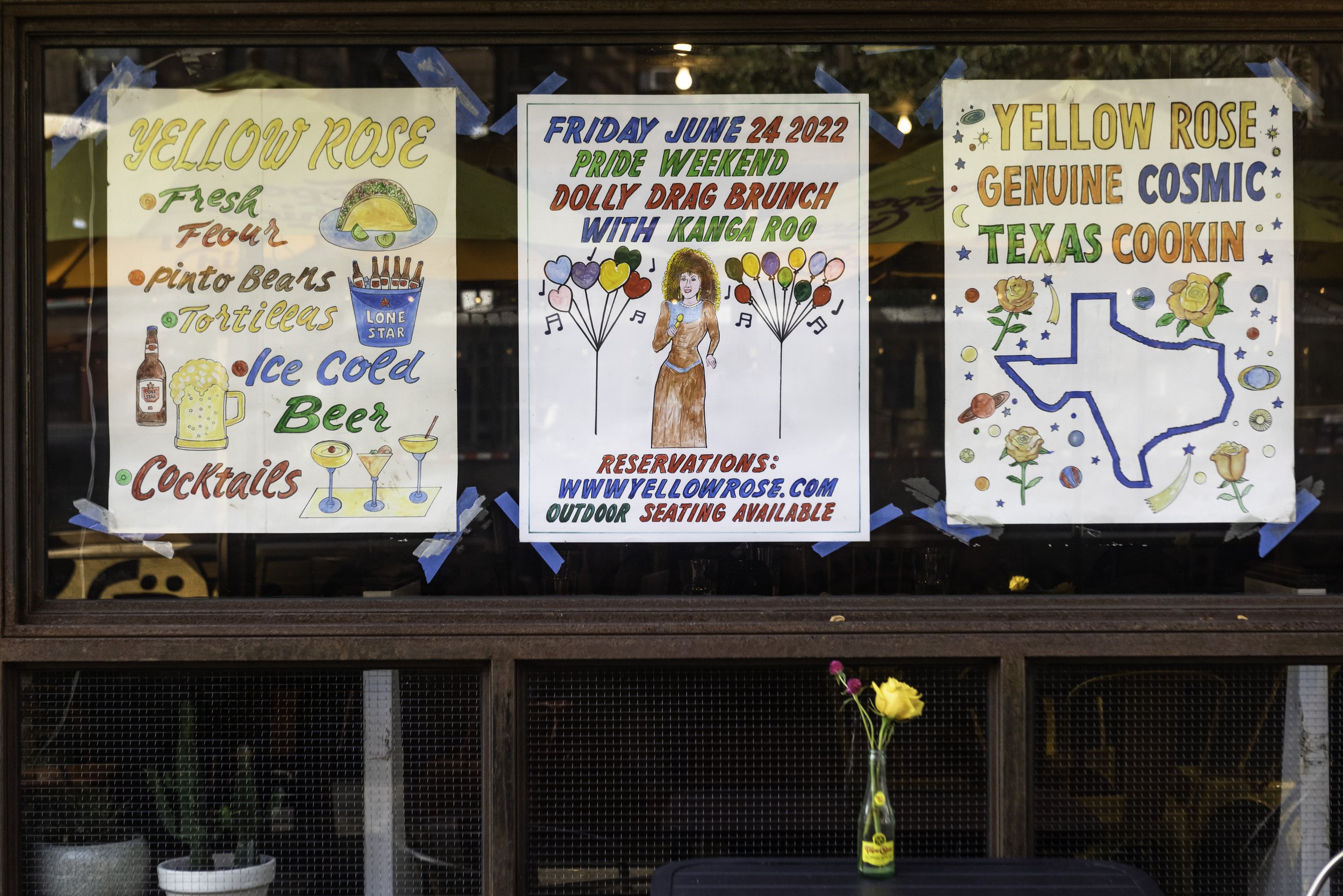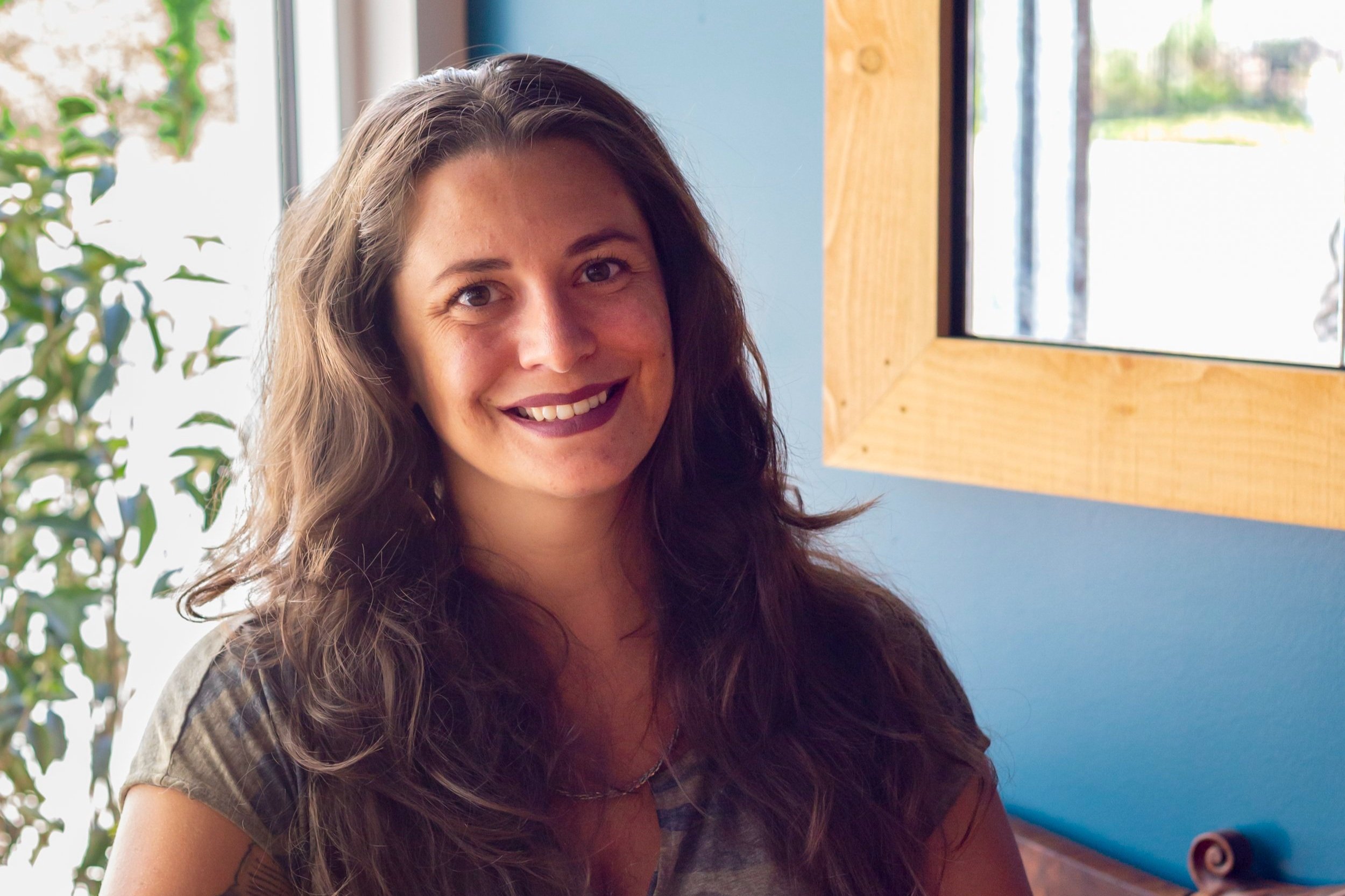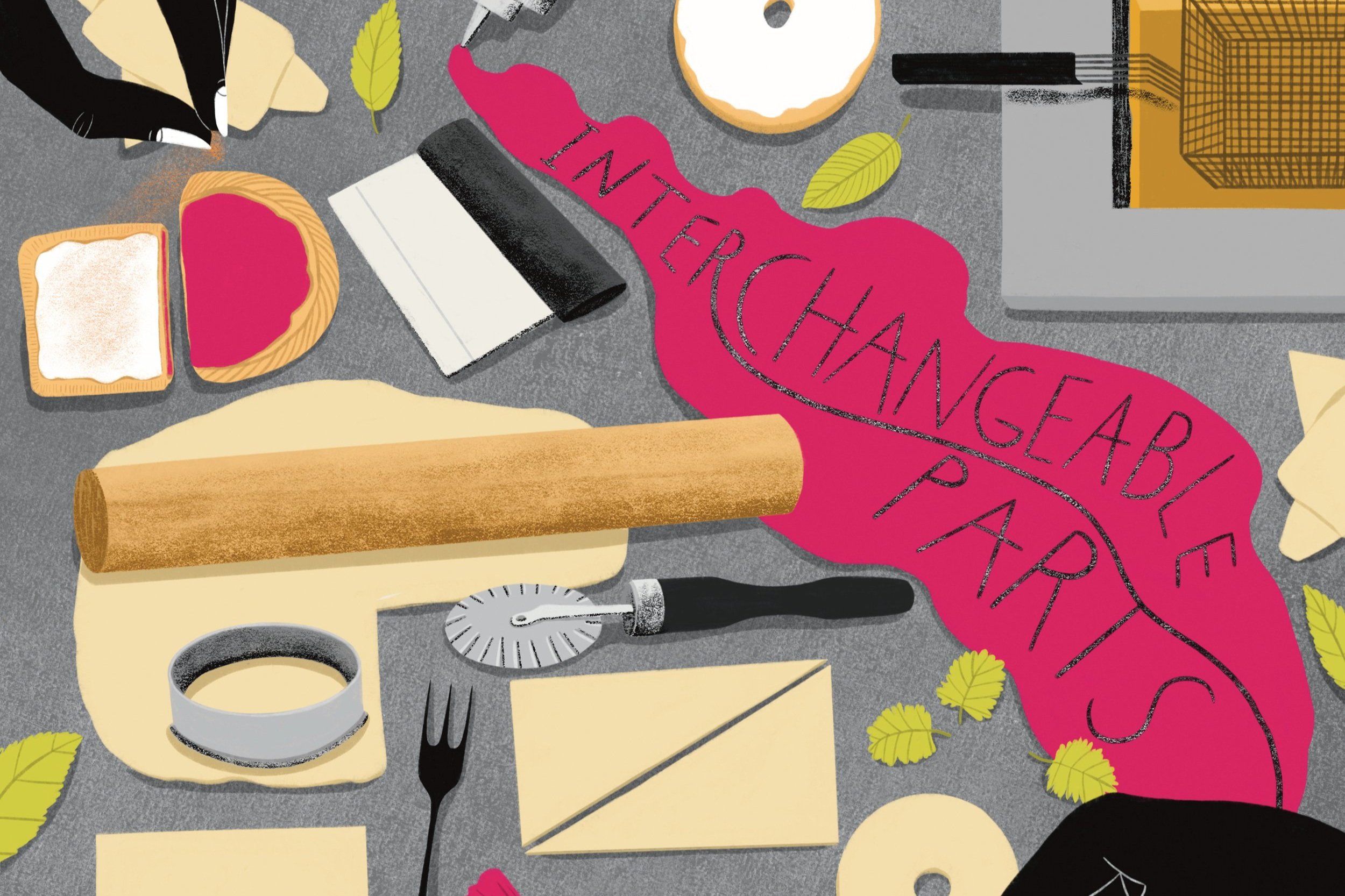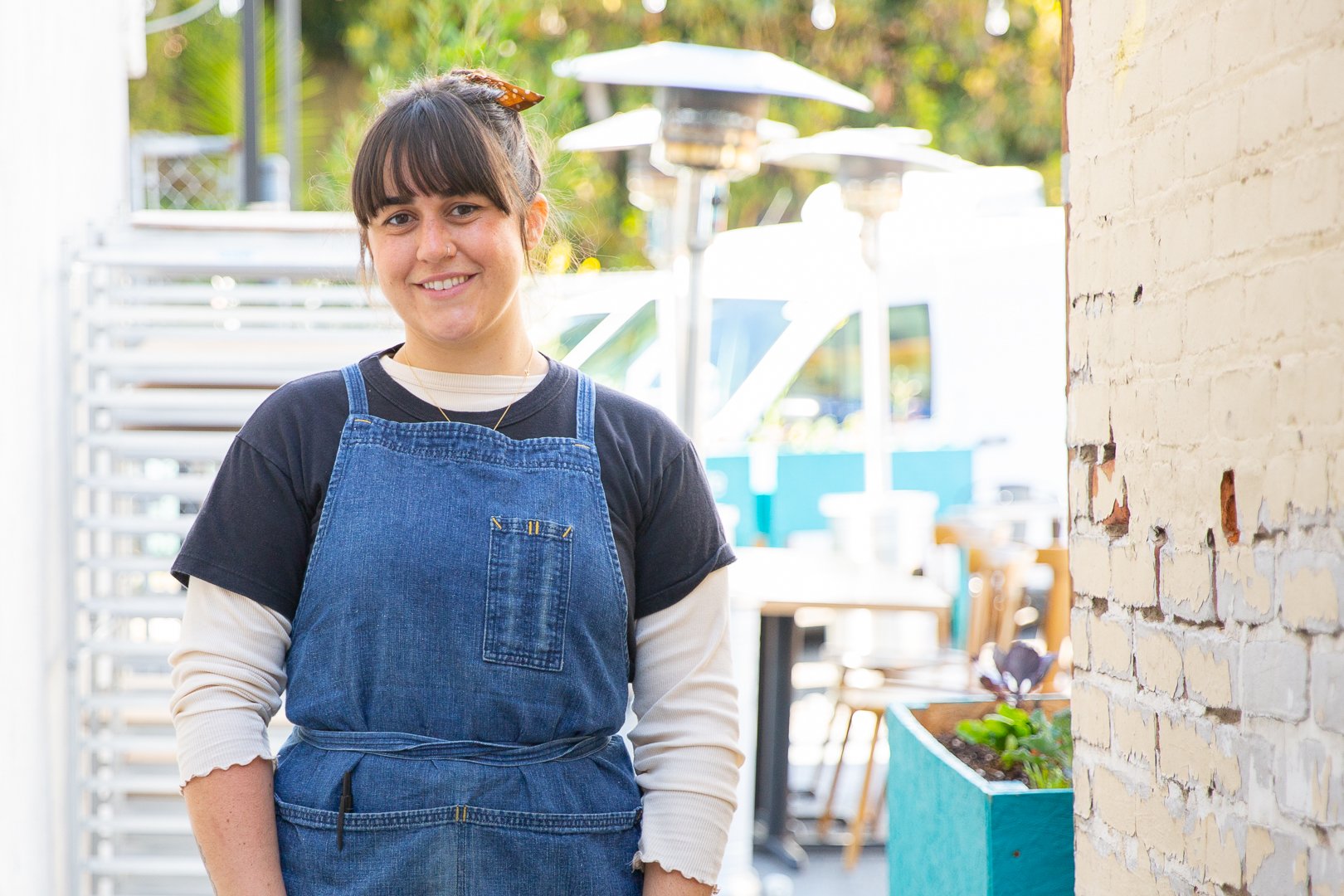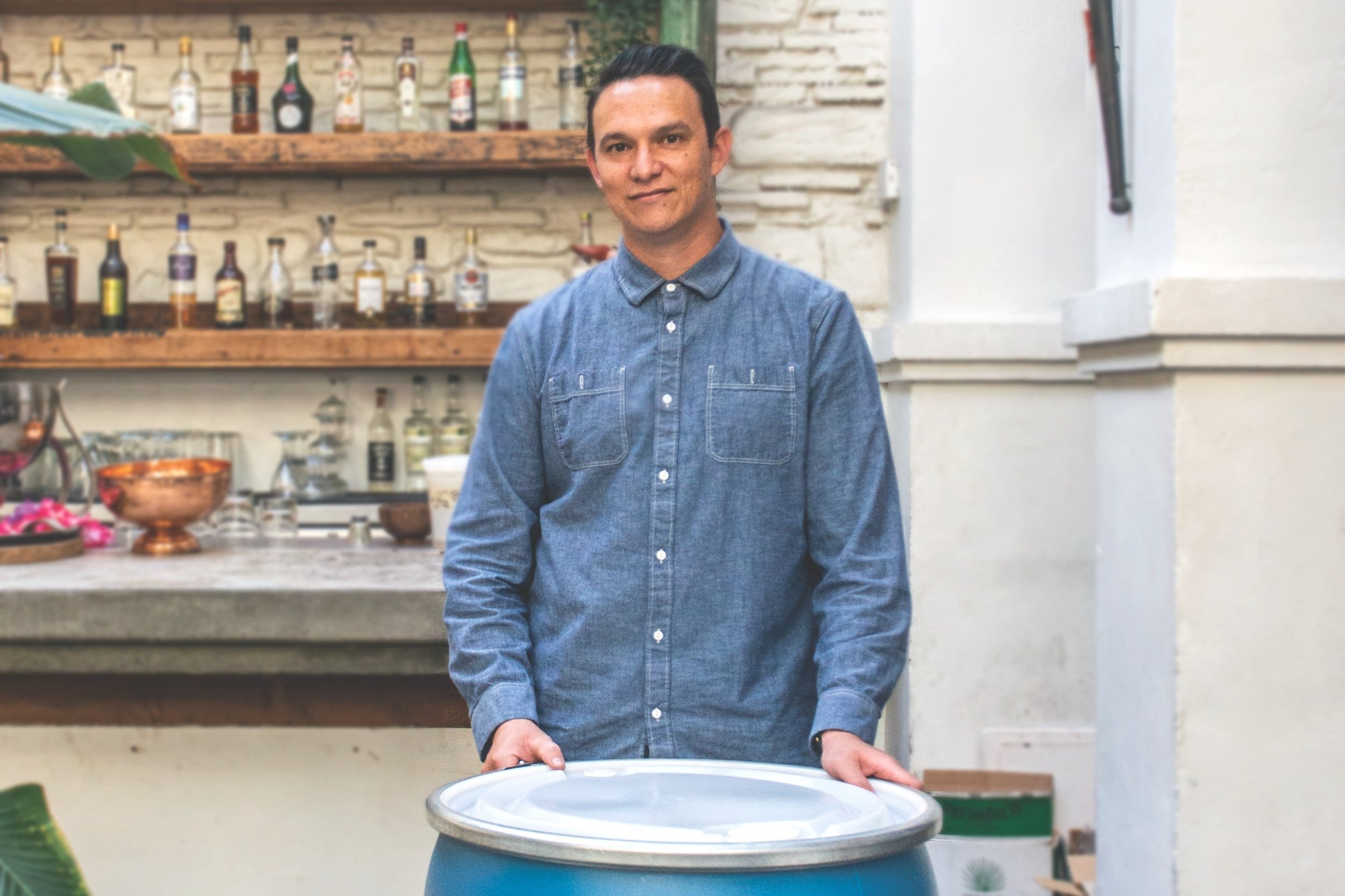The Reset Button
Through redefined menus, pared-back but highly trained staff and a focus on employee welfare, these culinary professionals share how they've emerged victorious through COVID-19.
When outdoor dining began this summer, the stories coming from restaurant professionals were primarily those of struggle: back-and-forth with contractors to build the proper street barriers, tents blowing over in thunderstorms, masks hiding the hospitality worker's trademark smile.
Everyone wondered, how can an industry built on the basis of hospitality and socializing maintain its identity through takeout, delivery and a constant 6-foot distance? How can you deliver warmth and service with a cardboard packaging, plexiglass and latex-gloved hands?
But constraint breeds creativity, and some of the stories were of positive transformation rather than just-scraping-by survival. Some New York City dining and drinking establishments have risen as models for what we call the “reset” rather than the “pivot.” Through redefined menus, pared-back but highly trained staff, and a focus on employee welfare, these culinary professionals share how they’ve emerged victorious through COVID-19.
FINE DINING, REDEFINED
Chef Mary Attea of The Musket Room
Chef Mary Attea of one-Michelin-starred The Musket Room upended the restaurant’s concept during the pandemic. Steps toward transitioning the menu from its former New Zealand cuisine to contemporary American were already underway when Attea assumed the position as the executive chef a mere three weeks before restaurant closures commenced across New York City in mid-March.
“A small silver lining for us is that [the coronavirus] has allowed us to regroup, refocus, and reassess how we wanted to move forward,” Attea says. At first, the chef started following everyone else in an overnight move to takeout. But the fine dining tasting menu and elaborate plating didn’t translate to delivery and to-go packaging. So Attea and her team came up with a completely separate menu with more takeout-friendly, comforting items that could be finished or heated at home, like a roasted chicken or endive salad.
“The endive salad and chicken are a bit heartier and able to withstand some time sitting or travelling,” Attea says. “We roast the chicken over bread, so in the time it travels, the bread is able to absorb the juices—which is one of the reasons it is so delicious. So in that case, the delivery time actually enhances the dish.”
And although not every dish is applicable to takeout, Attea was able to make a quick transition from The Musket Room’s New Zealand past to her own style, a process that would normally have to be waded into slowly. “The clients here before were getting a very different experience,” she says. “This was a big tourist spot. Now that we're hitting the local scene, people are excited for a new tasting experience and excited to get a half chicken.”
Chef Lena Ciardullo of Union Square Cafe
STRATEGIZING HOSPITALITY
Like Attea, Chef Lena Ciardullo took over a restaurant just shy of the pandemic closures. After working with Danny Meyer’s Union Square Hospitality Group for nearly a decade, she started as executive chef of Union Square Cafe in early February, just weeks before restaurants were forced to close.
USHG has long been considered the gold standard in hospitality and prioritizing employees. When customers step through the doors of Union Square Cafe, they are going to expect certain things: old-school refinement, outstanding service, impeccable food. Upholding this reputation is a formidable undertaking for any new executive chef.
“I wanted to have a lot of change and reset, and it would have taken a lot longer if it wasn't for COVID-19,” Ciardullo says. “You can't turn over the whole menu of a living, breathing restaurant. This restaurant has the history of chefs being here for a long time. Being able to bring a fresh viewpoint is really incredible.”
The warmth of service, as much of an essential ingredient at Union Square Cafe as the edible components of the menu, went through a revival. Outdoor dining was a new beast that required different systems, furniture, traffic patterns for workers, and food-running logistics. “Everything is constantly evolving. Each week, assuming we can continue to grow sales, we are adding more people and roles to the schedule,” says Ciardullo.
From a culinary perspective, it became important to watch the weather, as rain can mean no covers and more food waste. Heat waves or cool days can completely mess up the menu mix. “I watched the weather like a bride on her wedding day,” she says. But the fly-by-the-seat-of-your-pants menu-planning ironically gave Ciardullo the freedom she’d been wanting in order to make the menu more flexible. “One of the big things I wanted was to keep the menu ever-changing,” she says. “Changing the menu keeps your spirit light and fun. So if I taste something and say ‘That’s delicious,’ I’m going to put that on the menu tomorrow.”
In addition, the menu became more homey and a simple homage to Italian-American cooking. “We wanted to say, ‘How do you take Grandma’s food and make it really comfortable?’” Ciardullo says. “People are looking less for molecular gastronomy. We have a new G.M. who was at Manhatta to give [the restaurant] a trendy, youthful vibe. I was lucky because we had this chance to reset.”
One of the biggest alterations made at Union Square Cafe which USHG was famous for: checks are no longer gratuity-included. But it was always Ciardullo’s hope to lower the price of the dining experience. “We wanted to make Union Square Cafe a more affordable restaurant for everyone, where young professionals would want to go out without breaking the bank,” the chef says. “People should be able to enjoy good food and have a special occasion every day outside of the typical, infrequent ‘special occasion’ motivations for dining out.”
WHEN FRONT-OF-HOUSE MEETS BACK-OF-HOUSE
“It was a bold move opening during the middle of a pandemic,” says Strangeways Bar Manager Daniel McGee. “We were going to train our opening staff and set up the service flow of our entire restaurant but for the current times—a safety-first kind of way.”
Strangeways, a natural wine bar, opened in Williamsburg this July with a rustic, new American menu. Due to the current restrictions, New York bar culture has become vastly different. People can’t sit at the bar and socialize. Servers must keep contact minimal. Though people are still going out, less of that entertainment is coming directly from the purveyors.
Bartender DanielMCgee of Strangeways
To that end, McGee reduced his staff and began to employ a blended front- and back-of-house hybrid model. To make shifts worth while for his staff, McGee knew he would have to run lean. But in order to still maintain high standards of service, “you have to blend the traditional roles quite a bit,” he says.
For example, he no longer needed two bartenders and a barback to run the bar anymore since there was no bar seating. “So we have one to two bartenders running what is basically service well for the restaurant,” McGee says. “They’re also cleaning all the glassware. Making the coffees, barbacking for themselves, running drinks. Since they aren’t interacting with guests, they have more downtime to help with the flow of service.”
This model extends to servers as well. “As far as cross-training goes, most of our servers are career bartenders, as well,” McGee explains. “Not only are they taking turns working the floor and the bar, they are providing excellent service on all fronts, while knowing the menu inside and out.”
Employees work a backwaiter and a runner shift to understand all the protocols and be able to step in at a moment’s notice. There wasn’t any pushback from the staff because “they knew what they were getting into when we hired them. We hired them and trained them for these roles from the start,” McGee says.
Chef Jane Peang of Jeju Noodle Bar
Most hospitality professionals working at this time are learning versatility, getting a lot of experience in different roles, and training in more areas of a restaurant's operation than they normally would. McGee believes that short-term, mixed roles will become the norm.
Likewise, the hybrid front-of-house and back-of-house roles have always been a part of Michelin-starred Jeju Noodle Bar, perhaps giving the establishment a mild advantage during the pandemic. Everyone is hired to be trained as a cook for all stations, a server and a food-runner.
“You give good service as a server or runner, good food as a cook—everyone wins,” Chef de Cuisine Jane Peang says. She remembers that at past jobs, she saw a lot of inconsistencies during service due to a lack of connection from servers. A cross-functional method makes for more accountability and a better understanding of the menu.
“I think it's the future, what we are doing,” Peang says. “The generation now wants to do everything. They have a broader range of knowledge they want to gain.”
THE IMPACT
Despite the potentially pending second winter wave of the coronavirus and restrictions on dining, restaurant professionals are hopeful for the future of their industry. “I know that even if there were another lockdown or closure, we are now set up to handle that, and we can continue to produce takeout or delivery,” Chef Attea says. “We can continue to show up, employ staff, and work together to make sure we can provide sustenance to our neighborhoods.”
Once regulations are lifted and business volume increases, McGee predicts a rise in the demand for labor and amount of staff needed to operate will rise back to pre-COVID levels. He also thinks that capacity caps will be around for quite some time but hopes the sanitation procedures the industry has learned will be permanent.
“Social distancing, to some degree, will influence seat and table spacing for some time into the future,” McGee says. “I’m pouring a shot out for everyone struggling in our industry. We’ll get through this long rough night; we always do.”

